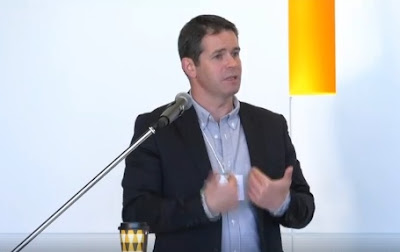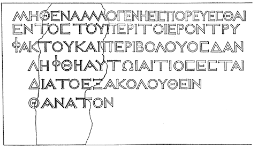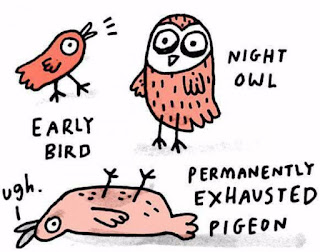 |
| Ben Blackwell giving the 5th paper of the Symposium |
To watch the video of Blackwell's paper presentation and subsequent response plus discussion, see the link below:
The response, by the way, was given by Cynthia Peters Anderson, Senior Pastor at Batavia United Methodist Church and author of the book Reclaiming Participation. She asked a helpful question that drew out the pastoral implications of Blackwell's paper: what symptoms of false or true worship do we need to observe in our worship practices at church so that we become more like Christ and not the idols of our age?
 |
| Brent Strawn giving the 6th paper of the Symposium |
My favorite line in the paper was: God's people are called to "participate in God's verbs." God has a synergistic relationship with Israel where at times, it is unclear if God is doing the action or God's people are doing the action. God works by, through, and with Moses and all His people.
To watch a video of Stawn's paper presentation and subsequent response plus discussion, see the link below:
The response was given by Nathan Clayton, Hebrew instructor at North Park and adjunct professor of Old Testament and Hebrew at Moody Bible Institute. Among other helpful insights, Clayton asked Strawn to map out and describe in greater detail what "synergy" is: that is, how do divine and human agency work in a synergistic relationship with each other.
The 7th session featured the paper by Michael Gorman, The Raymond E. Brown Chair in Biblical Studies and former dean of the Ecumenical Institute at St. Mary's Seminary and University. His paper was entitled: "Cruciform or Resurrectiform? Paul's Paradoxical Practice of Participation in Christ." In this paper, Gorman sets out to answer some of recent criticisms of his work (see what he calls his "accidental trilogy": Cruciformity, Inhabiting the Cruciform God, and Becoming the Gospel) that there is overemphasis on the cruciform character of theosis at the expense of resurrection. Engaging a group who wants to emphasize the "resurrectiformity" or "anastiformity" of participation in Christ, Gorman argues that while participation in Christ does have a resurrection quality, something is lost if the interpreter does not emphasize the cruciform nature of our life and union with God.
 |
| Michael Gorman giving the 7th paper of the Symposium |
The response was given by given by a North Park seminary alumnus Markus Nikkamen, who is currently a doctoral student of New Testament at the University of Aberdeen. The response was a robust engagement of Gorman's paper in its exegesis and theological assertions. One objection Nikkamen has is the language that "self-emptying" is part of Christ's nature. Perhaps love, but not self-emptying or kenosis. The response and discussion are both worth hearing.
The last and 8th session of the Symposium ended with the paper presented by Ashish Varma, Assistant Professor of Theology at Moody Bible Institute. His paper was entitled: "Jews and Gentiles Together? Acts 15 and Racial Reconciliation in Christ."
 |
| Ashish Varma giving the 8th paper of the Symposium |
The response paper was given by Hauna Ondrey, Assistant Professor of Church History at North Park Theological Seminary, who challenged the thesis of the paper that Acts 15 is an ideal model of mutual accomodations. In her opinion, Acts 15 represents a non-ideal compromise to the Gentile mission which still favors Jewish Christianity. If so, then it is actually quite dangerous to posit the Acts 15 Council as a model example of incorporation of diverse ethnicities into the church. The model could be used, for example, to favor white superiority where white Christianity is the new Jewish Christianity and all other ethnicities are the Gentiles.
To hear more, follow the link below to the video of the paper presentation, response, and subsequent Q&A.
This concludes the Symposium and all eight sessions. It was a tremendous weekend, and not only did I learn much, but I'm still reflecting on the implications of the papers/responses for the work and ministry of the church. MJL










